How It Worksokots_usa2021-07-15T13:27:30+00:00
OKO Tire Sealants eliminate most puncture problems instantly, while you drive! OKO sealants are viscous fluids, designed to combat the costly inconvenience of suffering punctures. Unlike other products, OKO includes special corrosion inhibitors that inhibit rust on steel and aluminum rims. What’s more, our corrosion inhibitors normally last the life of the tire!
OKO Tire Sealant is injected into your tubeless tire or inner tube via the valve stem before a puncture occurs. OKO remains in liquid form inside the tire, ready to provide lasting protection against punctures that may occur in the tread area. When a puncture occurs, air pressure forces your chosen sealant into the hole while the vehicle is moving, forming a permanent, airtight seal that instantly stops tire deflation.
In short, OKO seals the hole as you drive!
Video | Introduction
Video | How It Works
Reduces puncture risks & minimizes vehicle downtime
Seals holes from tread punctures instantly as you drive
Helps avoid run flats and loss of vehicle control
Eliminates call out charges & puncture repair costs
Provides multi-sealing capability for the life of the tire
Conditions and cools, extending tire life by an average of 20%
Functions in all conditions, including extreme heat or cold
Provides security, safety, and peace of mind
Seals large and small holes in tubed and tubeless tires
1.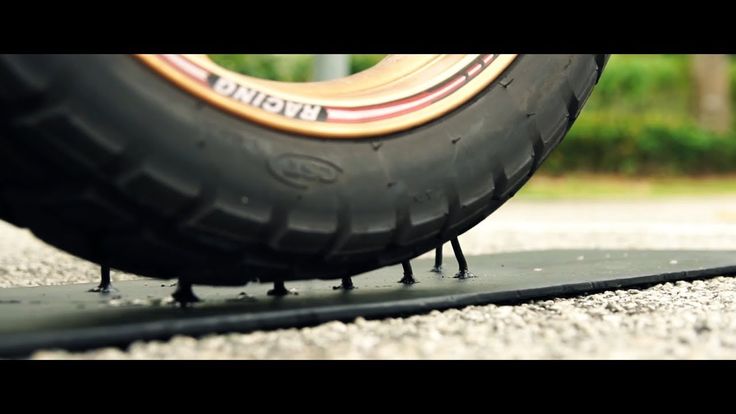 62X stronger than traditional vulcanized repairs
62X stronger than traditional vulcanized repairs
Does not dry out, freeze, separate, clog, or deteriorate
Will not damage rubber or tires
No adverse affects on steel or alloy wheels and rims
Contains environmentally friendly anti-corrosive agents
Non-corrosive, non-flammable, non-hazardous
Easy to store, easy to use
OKO products are designed and engineered by our research team in conjunction with a leading Rubber Technology Research Institute. The entire company, including production and administration, is certified under ISO 9001 for quality and ISO 14001 for environmental good practice. The company has also been assessed and warranted to be Carbon Negative, due to the fact that our products remove more carbon than it generates, largely due to their ability to lengthen the life of vehicle tires.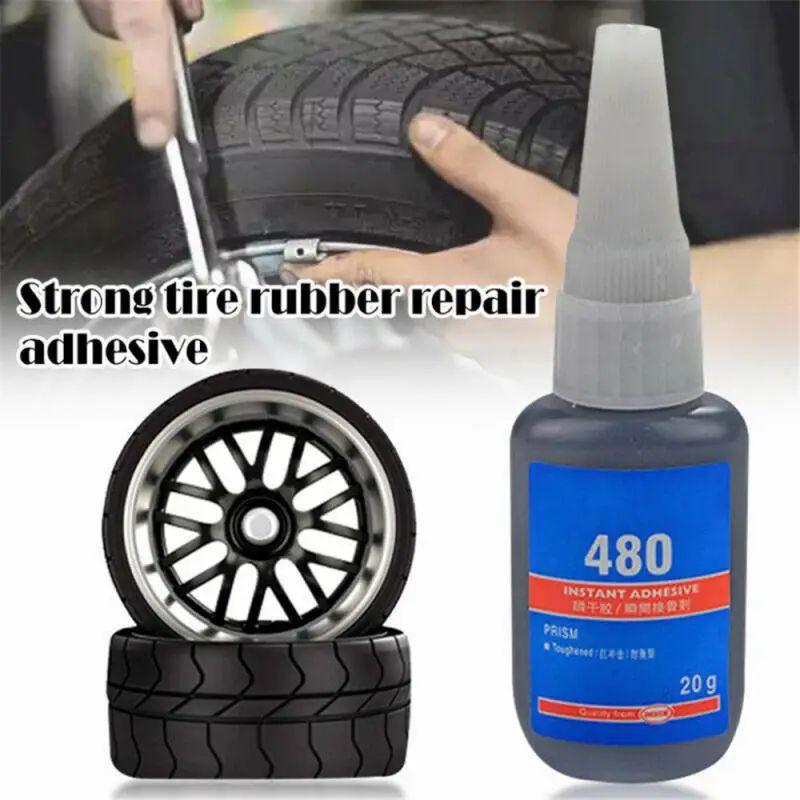
OKO has been tested by various armed forces and major vehicle producers. It has been used by the British Army; various S.E.A.T.O. & N.A.T.O. military forces; and United Nations Procurement Agencies; and served allied forces in areas of conflict, e.g. Iraq & Afghanistan.
OKO is also approved by JCS; Massey Ferguson; Manitou; and fitted to the wheels of disabled vehicles by various manufacturers/distributors.
| OKO Off Road | 1/2″ / 12 mm |
| OKO Mining X-Tra Heavy Duty | 3/4″ / 20 mm |
| OKO Truck & Bus | 1/3″ / 8 mm |
| OKO Quad & ATV | 1/4″ / 7 mm |
| OKO X-Treme Dirt Bike | 1/3″ / 9 mm |
| OKO On Road Motorcycle | 1/5″ / 5 mm |
| OKO Puncture Free Bike | 1/5″ / 4 mm |
| OKO Magic Milk™ | 1/4″ / 6 mm |
Our tire sealant products are among the most durable on the market.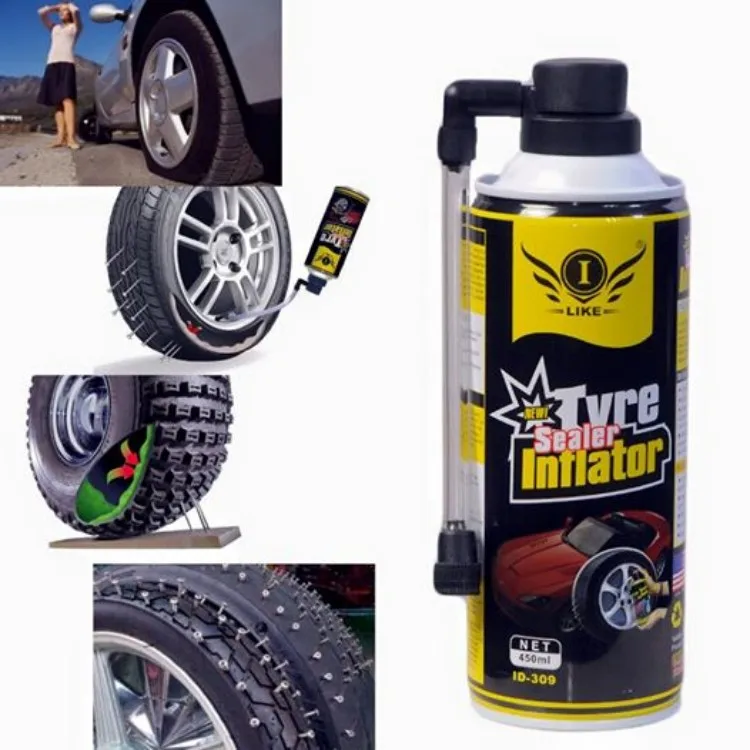 Unlike other manufacturers, we understand that there is no such thing as a “one size fits all” tire sealant. As such, we have engineered and developed vehicle-specific formulations that are suited for the specific demands of various industries.
Unlike other manufacturers, we understand that there is no such thing as a “one size fits all” tire sealant. As such, we have engineered and developed vehicle-specific formulations that are suited for the specific demands of various industries.
OKO Grades & Colors
| OKO Off Road | Off White |
| OKO Mining X-Tra Heavy Duty | Purple |
| OKO Truck & Bus | Salmon Red |
| OKO On Road Motorcycle | Pale Green |
| OKO Quad & ATV | Reddish Pink |
| OKO Puncture Free Bike | Light Blue |
| OKO Magic Milk™ | White |
2-Minute Expert is an NSMB series that distills concepts, technology and design into short, easily digestible articles.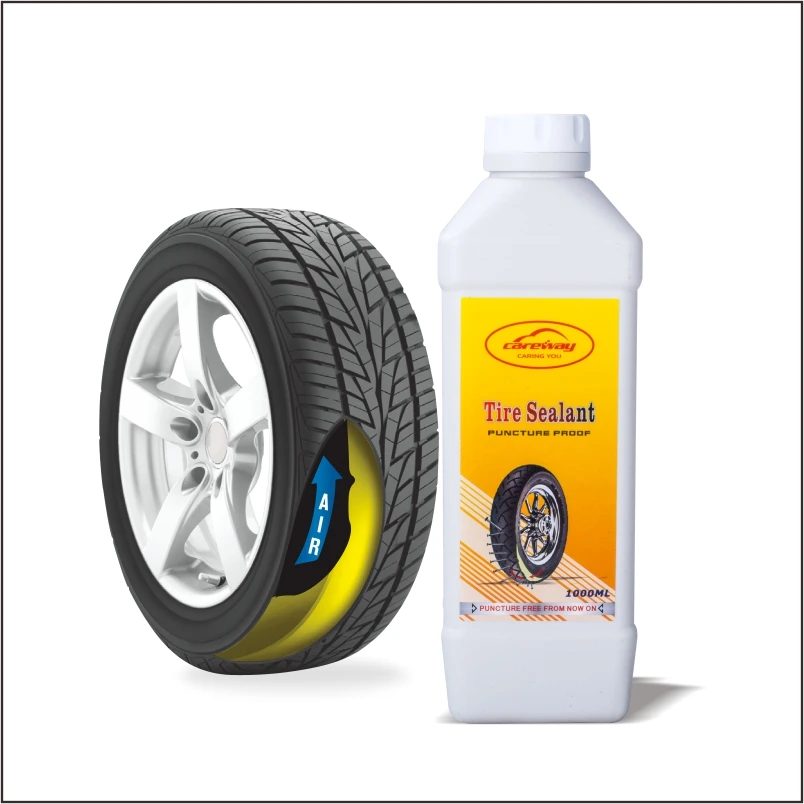
On the face of it, the premise behind tubeless sealant is as simple as blood clotting to seal a wound. Like cut skin, if a tire sustains damage, sealant is propelled towards the hole by the tire's escaping air pressure, and as long as the 'wound' isn't larger than the sealant's ability to clot and stop the loss of air, a new seal is established. Simple enough. But the inner workings of sealant are more interesting as well as more complex than that simple analogy.
The words latex and tubeless sealant are almost interchangeable, because latex has traditionally been both the best and pretty much only basis for sealant. Despite its ubiquity in most sealants, latex is not great stuff - it's not good for the environment, first of all, and it's a terrible allergen for some. Those two alone could be enough to condemn latex, but leaving them aside, latex also carries some performance deficiencies that really call its de facto dominance into doubt. Let's have a look at those.
Let's have a look at those.
Latex Issue #1 - it dries out
The latex used in most tubeless sealant is defined as a 'dispersion of polymers in water' and the main drawback of them is that they dry out in use - both in your tires and in your valves. This is annoying, but also means your sealant (and eventually your valve) becomes ineffective over time. It dries because as you ride, your sidewall flexes, exposing pores to the air outside, allowing the aqueous part of the sealant to escape.
Latex Issue #2 - it relies on a process similar to coagulation to work properly
Going back to our original analogy, latex works like blood to seal a tire's wound. That's fine, but larger wounds require help to seal - hence the use of additives in many sealants, like glitter, pepper or gluten. Some of these are harmful to the environment, but they all play havoc with your valves, reducing your valve's efficacy until it has to be replaced.
Latex Issue #3 - it won't work if it freezes
Once frozen, latex becomes unusable, so for use in cold temperatures, you need to use nasty chemicals like methanol to help it retain its liquidity. This is the same as with latex paint, which is unusable at freezing temps (below 0ºC or 32ºF).
This is the same as with latex paint, which is unusable at freezing temps (below 0ºC or 32ºF).
It's common to see sealant seep through the sidewall of a new tire, and not surprising that our instinct is to think that's a bad thing. Sealant is supposed to seal that sidewall, so if it's coming through, it means the sidewall is not robust, right? Not exactly. Sidewall seepage happens because as you ride, your sidewall flexes, opening pores and letting the aqueous part of your sealant escape. This is your sealant doing its job - rushing to the rescue to plug a hole, or many small ones in this case - not a bad thing. However if too much sealant escapes, it accelerates the drying process on the inside of the tire, meaning you have to replace it or top it up more often (or in the worst case, being dried up and ineffective when you need it). Another thing: if the seeping sealant evaporates quickly and disappears from the sidewall, that means it's a volatile substance, (many sealants contain volatile, harmful substances like ammonia) whereas if it stays in place on your sidewall, it's not volatile (nor harmful). Sealant on the sidewall is not bad, and a quick wipe and it'll be gone - all the better if it's a safe substance you're wiping off of that surface. The volatile substance evaporates, making you think there's no problem, when in reality your sealant is literally evaporating into the air, losing its effectiveness and requiring shorter service intervals.
Sealant on the sidewall is not bad, and a quick wipe and it'll be gone - all the better if it's a safe substance you're wiping off of that surface. The volatile substance evaporates, making you think there's no problem, when in reality your sealant is literally evaporating into the air, losing its effectiveness and requiring shorter service intervals.
A bit of sealant in your sidewall isn't as bad as you think, especially if it's a non-volatile substance that doesn't dry out quickly (ie. not latex-based), so it'll seal the sidewall rather than causing it to dry out and need frequent replenishing.
Sealant should roll continuously in the tire - this allows it to coat the inside properly and respond to punctures more quickly, but there's an added reason for its importance: moisture preserves your tire's seal at the bead. The same concept applies to dishwashers: when used regularly, the dishwasher's seals stay moistened and effective, but if you don't use it for 6 months, the seals can dry out and no longer seal moisture properly.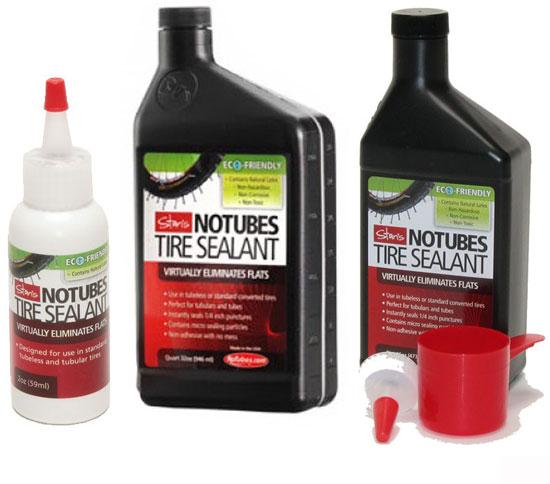
Taken all together, we can understand both the way your sealant works keep your tires running well, and the various factors that affect its performance. It becomes clear that latex-based sealants are problematic, from both environmental and performance standpoints, even if they're the current standard to which we've become accustomed.
Whistler Performance Labs has a newly reformulated bio-based tubeless sealant that is designed to maintain its liquid form longer than latex-based sealants. To do that, WPL engineered a solution that is more like a gel than a liquid. It is water soluble (making it easy to clean off of your wheel and tire after installation or when changing tires) and not harmful to the environment. This is WPL's second iteration of their tubeless sealant - the first generation was effective as a sealant but occasionally not viscous enough, which sometimes made it difficult to install via a valve or less effective in cold weather.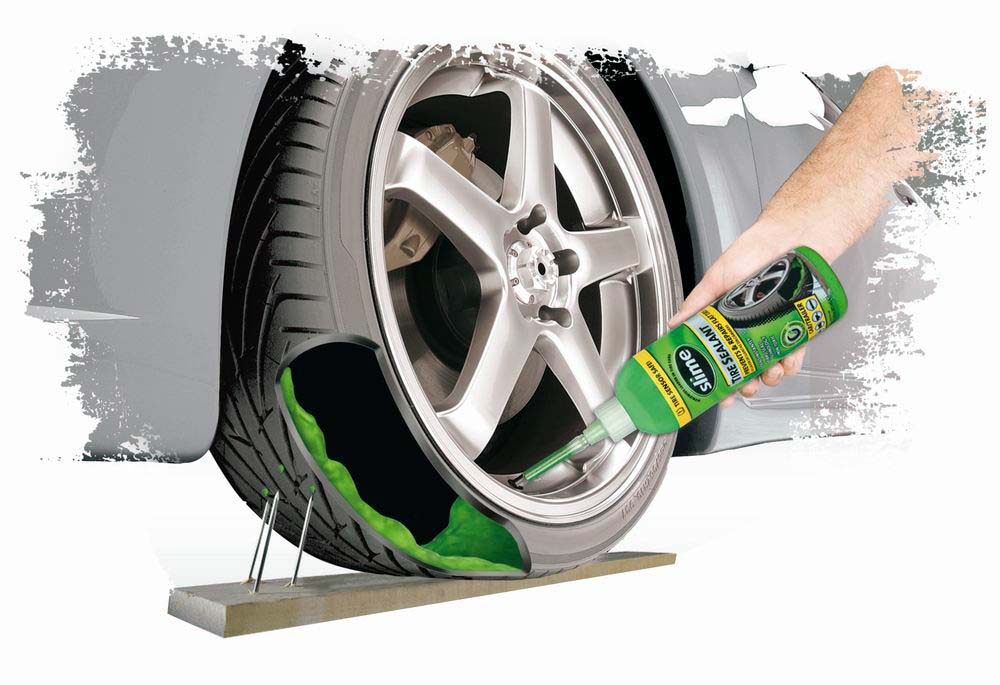 The new version addresses this, so now you can rely on it to last longer inside your tire than latex-based sealants, and keep your tires running at the pressure you expect, all while avoiding the use of toxic substances. Sometimes the bio-based solution is harder to perfect, but the results are well worth it in the end.
The new version addresses this, so now you can rely on it to last longer inside your tire than latex-based sealants, and keep your tires running at the pressure you expect, all while avoiding the use of toxic substances. Sometimes the bio-based solution is harder to perfect, but the results are well worth it in the end.
You can learn more about WPL's Race-Ready Sealant, as well as the rest of their 100% bio-based bike maintenance products at WPL's website.
A car tire puncture is an unpredictable phenomenon. A spare or stowaway will of course help, but in some cases a faster method of troubleshooting may be required. For girls, changing a wheel can be a serious test. In such situations, a special material - tire sealant - can become a reliable means of repairing a puncture.
In most cases, tire sealant is an aerosol can containing a special chemical material that seals the tire from the inside.
The composition of the sealants are:
The latex sealant works from the inside of the tire.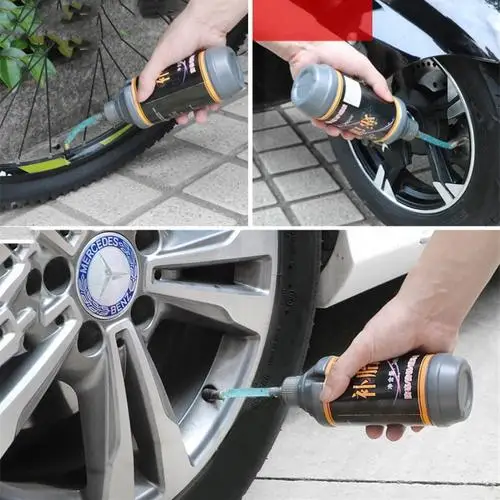 The material covers the inner surface, and getting to the place of breakdown, isolates it. Compositions based on synthetic or natural fibers are made on the basis of asbestos, polyethylene or paper. They, unlike latex sealants, act only at the puncture site itself.
The material covers the inner surface, and getting to the place of breakdown, isolates it. Compositions based on synthetic or natural fibers are made on the basis of asbestos, polyethylene or paper. They, unlike latex sealants, act only at the puncture site itself.
By appointment means for tires are preventive and repair.
Means for preventive purposes are used in order to prevent a possible breakdown of rubber. A special sealing compound is fed through the nipple into the tire.
Under the influence of centrifugal force, which occurs when the vehicle is moving, the material is distributed over the inner surface of the tire.
When a tire breaks down, into which a preventive sealant is poured, there is no pressure drop in the wheel.
If the tire is with a chamber, then the composition is poured between the balloon and the tread layer. Due to the air cushion that is present in the wheels with the camera, heating can occur. Since the material withstands high temperatures, it contributes to the cooling of the tread. When using a preventive sealant in tubeless tires, the composition is distributed inside the wheel and prevents the occurrence of punctures and cracks.
Since the material withstands high temperatures, it contributes to the cooling of the tread. When using a preventive sealant in tubeless tires, the composition is distributed inside the wheel and prevents the occurrence of punctures and cracks.
Additional functions of sealants:
Repair sealants are used if a puncture has already formed and it is urgent to restore the integrity of the wheel in order to continue further movement.
When the material is injected, the pressure in the tire increases and the tire takes shape. A film or liquid is formed inside the wheel, which, under the influence of centrifugal force, is evenly distributed inside the wheel and clogs the sample.
In addition to aerosols, there are materials in vials. They do not increase tire pressure, so the tire must be inflated after filling. But such materials can be used with fully flat tires.
They do not increase tire pressure, so the tire must be inflated after filling. But such materials can be used with fully flat tires.
Repair sealants can only be used in tubeless tires. In tires with chambers, their use is unacceptable, since such material will simply glue the cylinder to the inner surface, and the wheel will become unusable.
There are a lot of tools for repairing punctured wheels on the market. In order to attract a potential buyer, manufacturers prescribe "tasty" properties to their products. But, if we put aside all the marketing tricks, to select the optimal tool, you should pay attention to the following characteristics.
Firstly, this is the purpose of the material. Aerosol wheel sealants, unlike those sold in bottles, have the additional function of increasing the pressure inside the tire. In terms of efficiency, it is impossible to say exactly which composition is better, but the ability to increase tire pressure can be indispensable, especially in cold or rainy weather.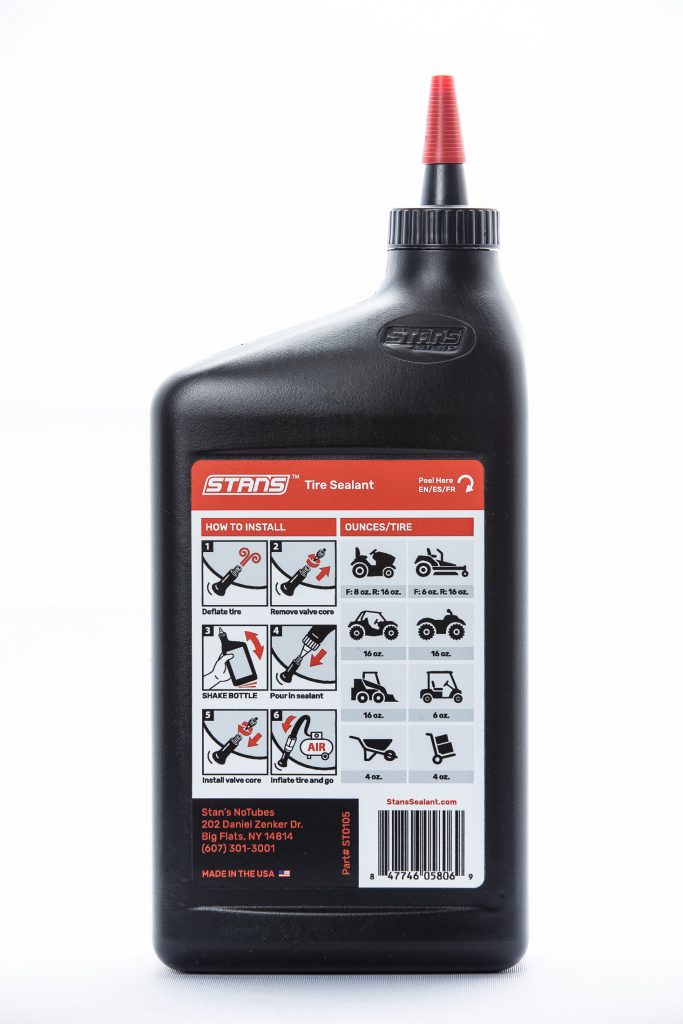
The second is the operating temperature range of the sealant, namely frost resistance. At negative temperatures, some compounds crystallize, lose their properties and become completely useless.
An important role is played by the volume of the sealant. For example, 300 ml of spray is enough to eliminate a puncture in a small car tire, but this is not enough to repair an SUV wheel. Therefore, the dimensions of the installed tires should be taken into account.
This information is contained on the label or instructions for use.
Do not forget about the types of tires installed on the car. Different sealants are used for tubeless and tube tires, but there are also universal compounds that are suitable for both types.
You also need to consider the number and size of punctures. Sealants can repair up to 6 punctures at the same time. At the same time, no composition will close up holes larger than 1 cm.
In addition to the above nuances, there are some difficulties that may arise when using a sealant.
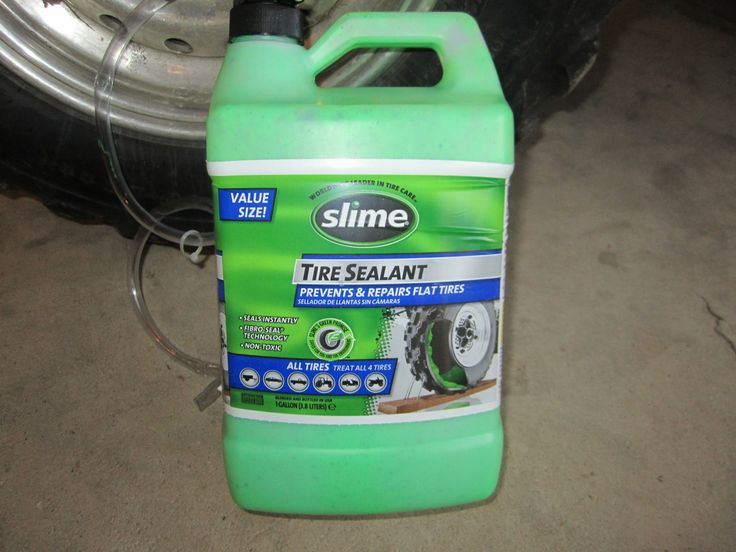
Remember that the effect of tire adhesives is short-lived. Depending on the material, a retreaded wheel can be driven from 10 to 20 kilometers at a speed not exceeding 40-50 km/h.
To eliminate lateral damage with the help of such sealants will not work. It's all about centrifugal force, due to which the composition remains only in the projector area, and does not flow onto the side surfaces. Also, do not use sealants if the wheel is deformed.
If you are using aerosols that contain flammable gases, then the wheels should not be inflated with air. During driving, the rubber heats up and the mixture inside can ignite and explode.
Repairing a wheel with sealants is not a difficult procedure. The main thing is to follow certain rules that depend on the material used.
First you need to remove the object that caused the puncture or, if it is not there, find a hole. Then you need to turn the wheel so that the damage is on top. With a completely flat tire, bleed off any remaining air.
With a completely flat tire, bleed off any remaining air.
The application of most sealants requires the removal of the spool, but with aerosols such manipulations are not necessary. Check the instructions for the material to see if the spool needs to be removed.
Next, you need to install the tip of the cylinder or tube into the valve and press on the valve. Repair can be considered completed as soon as the wheel becomes the desired shape. After that, you should measure the pressure in the tire, and, if necessary, bleed or inflate the wheel.
After a short trip (2-3 km) you need to check the tire pressure. This is due to the fact that some compounds are active for a long time. Therefore, in order not to drive on overinflated tires, it is important to know exactly what air density is in the wheels.
The procedure for working with a fluid sealant is almost the same as with an aerosol one. The main difference is that the wheel after filling the product must be turned several times and then pumped up to the desired pressure.
When going on a long trip, the first thing that worries every driver is the good condition of the vehicle, because the most important thing is to get to your destination without unnecessary adventures. But, unfortunately, this is not always the case and quite often, some part of the car fails. In addition, even if you manage to avoid technical breakdowns, it will definitely not work to foresee a tire puncture, and sometimes there are various piercing and cutting objects on the roads. It's good that in the modern auto world they provided for such an option and invented a special tool that allows you to do without a jack and a spare wheel. Of course, you won’t drive far on it, but you should be able to get to the nearest service station.
Among all the variety of auto chemicals, automotive sealant is a relatively new product that appeared a little over a decade ago. However, despite its young age, thanks to its efficiency and ease of use, it has already been able to win the trust of many motorists. What is remarkable and how this invention works, we will now tell you.
Tire sealant is a special compound that can be used to seal a punctured tire from the inside. Today, there are two types of this miracle remedy: preventive and repair.
Preventive sealant is poured into the tire before damage, which insures it from possible punctures. Even if the tire already has small cracks and holes that the driver is not aware of, the tool immediately eliminates them. Moreover, the nature of its action depends on the presence or absence of an intra-tire camera. If it is present, then the sealant simply spreads in the air cushion, between the cylinder and the inner layer of the tread, also protecting the cord (the bearing part of the tire), and it does not matter what material it is made of: polymer or metal. In a tubeless tyre, the sealant composition is distributed over the entire inner sealed surface.
The effectiveness of such sealants is based on the appearance of centrifugal force that occurs when the vehicle is moving, due to which the composition evenly diverges over the entire inner surface of the tire. Also, some preventive sealants have additional properties, such as protection against corrosion or rot of polymer and steel cords; the ability to slow down the oxidation process, which leads to rapid tire wear, and due to its composition, this agent prevents delamination of tires and in case of overheating (found in chambered wheels, when the air cushion around the cylinder is heated) cools the tires very effectively.
Even if there is a spare tire ready for use in the trunk of the car, and the process of replacing it does not frighten the driver at all, all the same, many motorists prefer not to get dirty and not get the jack once again, especially if there is a suitable alternative. Therefore, it does not matter at all what condition your car is in, whether it is new or old, with intact or already repaired tires, to prevent problems associated with unexpected punctures, it is better to apply sealant for car tires in a timely manner and not think then how to quickly change the wheel.
Unlike the first option, the repair sealant is applied after the fact, that is, when the tire is already punctured. In most cases, he successfully replaces the spare tire and calmly helps to get to the tire shop. Typically, repair sealants are available in aerosol cans that connect to the wheel valve and are able to do two things at once: on the one hand, they close the puncture, thereby eliminating air leakage, and on the other, they increase tire pressure. However, there are many sealants that are available in plastic bottles, and you can pour them into the wheel through the valve, and the tire must be flat. Means of this type are slightly inconvenient to use, so they will soon be completely replaced by aerosol counterparts.
Today, on sale you can find two types of repair sealants that differ from each other in their composition. The first type includes latex-based products, and the second type includes sealants with synthetic and natural fibers or granules. Latex is a naturally occurring rubber that hardens when exposed to air. It is clear that getting on the inner surface of the tire, such a composition envelops it, including the puncture site, after which it solidifies, tightly sealing all the gaps. The fibers and granules that are part of the second version of hermetic products act on a similar principle, clogging under the action of air pressure (or any other gas that fills the aerosol can) into the puncture sites, they seal them. Such fibers can be polyethylene, paper, asbestos, etc.
Coming out of the aerosol can, the sealant forms a foam that actually fills the tire from the inside. Subsequently, not even a trace remains of it, since the composition either completely settles in the form of a film, or acquires a liquid form that requires subsequent removal.
Let’s say you don’t have a spare tire and you didn’t worry about the preventive treatment of the tire with sealant, but if you have a repair aerosol that was included in the car kit, you can not be afraid to get stuck on the road with a punctured wheel, because it can easily replace the missing spare tire.
Be sure to read the instructions on the bottle before use. The main thing you should pay attention to is the shape of the tire, since the sealant is injected only when the tire is flat, but this is not a problem with a puncture: in a couple of minutes it will become like that itself, and you will only have to try out the sealant.
If the composition for express repair is really of high quality, then further developments may take place according to the following scenario. After shaking the can, you connect it to the tire nipple (this can be done directly or through an adapter) and press the valve. The reaction of the tire will not be long in coming and the wheel will begin to round noticeably, while raising the body of the car. If foam begins to appear from the puncture, do not be alarmed, there is nothing wrong with this, and after hardening, the remnants will wipe themselves off on the roadway.
After that, measure the atmospheric pressure in the tread and, if necessary, inflate the wheel to the desired state. Everyone, you can keep going! On long trips, experts recommend periodically stopping and checking tire pressure, because some compounds can maintain activity for a long time. For example, the optimal pressure in the tire is within 2 atmospheres, after using the sealant it was inflated to 2.4 atmospheres. We stopped, bled excess air and drove on, after a while, if necessary, the procedure should be repeated.
Please note! When using some aerosol sealants containing flammable gases, it is strictly forbidden to pump air into the wheel, as this can cause unpredictable consequences.
In the modern car market, which offers a bunch of the most diverse products, it is not so easy to navigate, which also affects the choice of wheel sealant. If you have already decided that you really need this tool, then before buying it, you should consider several selection criteria. The first, main recommendation when buying a sealant is the need to match the composition of the product and the temperature regime of the region of application. The fact is that some imported sealing agents in our climatic conditions (meaning the winter period) simply freeze, as a result of which they lose their working properties. The temperature range of operation of a particular sealant is indicated in the instructions attached to it, and it is necessary to start from the minimum value.
Also, when choosing a tool, you must consider its type. Some can only fix a puncture, while others, in addition, are also able to increase tire pressure, which is extremely convenient. On sale, such sealants come in aerosol cans, while simple ones come in plastic bottles. We should also not forget about the possibilities of this or that drug. For example, aerosol with a volume of 300 milliliters may well help with a small car tire puncture, but it will not be able to cope with an SUV tread. That is, when choosing, you should be guided by the diameter of the wheel, and the manufacturer usually indicates the maximum tire radius that can be restored using this tool on the packaging.
Most of these compounds work well only in tubeless wheels, but there is also a universal type suitable for repairing punctures in tubed tires, respectively, when buying, this point should also be considered.
It is equally important to pay attention to the size of the puncture, as standard sealants are able to overcome damage up to 6 mm. , some products are suitable for repairing holes in 10 mm. , but not a single composition can cope with holes larger than 10 mm. If the last option is more suitable for your case, then it is better not to waste the product and install a spare tire.
As a general rule, one can should be enough for several times, using it at the same time to repair two or more punctures (some can cope with six holes). It is very important to take into account the consumption of the agent and the speed of its injection, since it is possible to use up the entire cylinder in a matter of seconds, thereby increasing the internal pressure to a critical level.
The main advantage of tire sealant is the ability to quickly repair a punctured wheel and deliver the vehicle to the place of repair , because the composition is not a panacea in solving the problem and has a temporary effect. Most sealants allow you to drive about 10 km. , with the obligatory condition being compliance with the speed limit (no more than 50 km / h), and driving at high speeds can be dangerous. In addition to the advantages, such tools have some disadvantages.